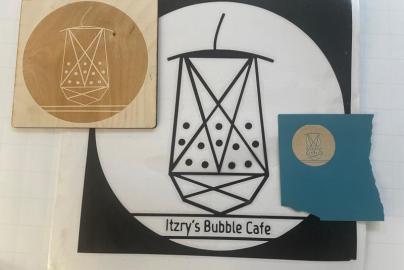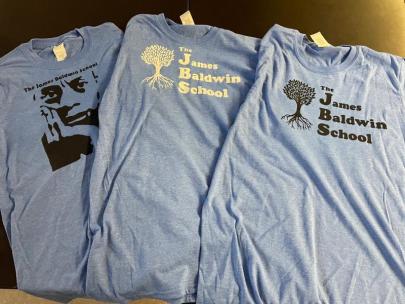
How MƒA helps Jamie Munkatchy implement makerspace education in her classroom, creating greater equity and access through hands-on learning.
As an artist, MƒA Master Teacher Jamie Munkatchy knows the particular feeling of satisfaction that comes from making things. Before she began teaching chemistry in New York City public schools, she co-founded Booklyn, a nonprofit that supports artists and organizations committed to environmental and social justice, and developed her craft by learning screen printing, printmaking and other skills.
Now in her 15th year of teaching, Munkatchy is giving students at the James Baldwin School in Manhattan the opportunity to personalize their learning through a process of design and experimentation similar to the one she employs in her artistic work. “I really see young people have fun, and see their self worth and their self-esteem and their engagement go up, when they're given tools to apply what they have learned to making something,” Munkatchy says.
The hands-on learning labs known as makerspaces have emerged as a major trend in STEM education, with K-12 schools around the country dedicating spaces for students to experiment with equipment ranging from screwdrivers, hammers and wood to high-tech tools. In a 2018 MƒA course titled “How to Start a Makerspace,” Munkatchy gained the inspiration and practical advice she needed to build a makerspace in her own classroom. With it, she’s enabling her students to think critically, design solutions to challenges, collaborate with each other and gain confidence in their own learning.
In the workshop, Munkatchy learned about the Beam Center, which helps teachers purchase and install equipment for makerspaces using special funding sources available to Title I schools in New York City. She soon turned a section of her classroom into a screen printing studio stocked with two 3D printers and laser and vinyl cutter machines. Her classroom makerspace also boasts physical computing tools, woodworking tools, and cooking equipment.


Having the makerspace has helped Munkatchy shift her curriculum from the traditional scientific method toward a focus on the engineering design cycle. “I want to center the making of the thing, and the design cycle explicitly talks about iteration — the more iterative your process, the better it is.”
Munkatchy also appreciates how the design cycle centers problem solving, rather than more abstract scientific concepts. As a result, she has seen her students grow more engaged and recognize more connections between the work they do in class and the real-world problems they want to help solve. “The design cycle allows students to shine more,” Munkatchy says. “The scores are just higher on those papers than they are if I used the scientific method rubric.”
“I really see young people have fun, and see their self worth and their self-esteem and their engagement go up, when they're given tools to apply what they have learned to making something."
After building the makerspace, Munkatchy worked with the community-based organization CAMBA to create a paid internship for students that incorporates the principles of sustainability, making and entrepreneurship. Students meet with her to work on projects ranging from screen printing student-designed school hoodies to resume development and small business education.
“We talk a lot about what they want to do after high school, and I'm able to design something that takes into account what they want to do and what their interests are.”


Munkatchy stresses the importance of preparing students to make a living, and incorporates entrepreneurship skills and concepts such as building wealth into her classes as well as the internship. They get access to the makerspace to further their passion projects or side hustles, from screen printing t-shirts to weaving artificial hair to making parts for dirt bikes. “Without these resources, my students would not see the relevance and immediate applicability of their education to their ideas for building businesses,” she says.
In an effort to create even more equity and access in the classroom, Munkatchy and two fellow MƒA teachers led a workshop on reframing feminine craft in makerspaces in order to better center young women in STEM classrooms. “It's incredibly important that all of the making that people do — whether it's cooking and sewing or whether it's soldering or using a saw — is valued equally, and that people of any gender can see themselves in these spaces,” Munkatchy says.
Munkatchy also relies on MƒA to help her think through some of the difficult issues that get in the way of many students’ abilities to learn effectively. “MƒA doesn't just tend to my need to understand laser cutting and 3D printing — it also tends to my need to better understand discrimination and segregation and inequity in schools. And that's incredible too.”
Munkatchy freely admits that teaching can be hard, and that sometimes “you end up in spaces where there is bad morale.” For these times, she says, “MƒA is a counterweight for me. It’s a group of people who are engaged in their profession, and a lovely thinking community.”
